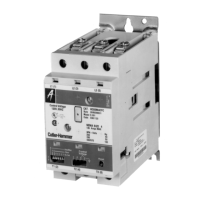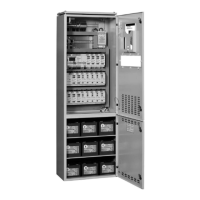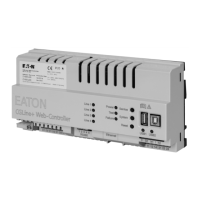IB01602009E For more information visit: www.eatonelectrical.com
Instruction Booklet
Effective: April 2004 Page 9
ATC-300 Automatic
Transfer Switch
Controller
If the LCD Display is displaying the Home screen when the
Help/Lamp Test key is pressed, all of the LED’s will momen-
tarily illuminate, then the following information will scroll
across the display:
■ Serial number of the ATC-300 Controller;
■ Hardware revision number (= parts list revision number);
■ Software version and revision number;
■ Feature code – a decodable string listing all optional fea-
tures programmed in the ATC-300 Controller; and
■ Firmware version.
Engine Test Pushbutton
The Engine Test pushbutton allows the user to test the
Source 2 (generator) engine. The engine test function can be
set with the ATC-300 Controller to one of three setpoint
modes to allow flexibility in how the test is run:
0 No Load Engine Test;
1 Load Engine Test; or
2 Disabled.
The factory default is set to 1 - Load Engine Test.
For complete information on the Engine Test function, see
Section 5.7.
Step/Enter Pushbutton
The Step/Enter pushbutton allows the user to scroll through
the information and setpoint displays. By pressing the Step/
Enter pushbutton, the information on the LCD Display will
advance through the voltage(s), frequency, and status condi-
tion of Source 1, then Source 2, then the time and date infor-
mation, then the history information, then the setpoints. The
information on the LCD Display advances one step through
the displayed information cycle with each depression of the
Step/Enter pushbutton.
Increase Pushbutton
The Increase pushbutton allows the user to increase the value
of the setpoints. When ATC-300 Controller is in the “Pro-
gram” Mode (to change setpoint values), each time the
Increase pushbutton is pressed, the value of the displayed
item will increase by one.
Decrease Pushbutton
The Decrease pushbutton allows the user to decrease the
value of the setpoints. When ATC-300 Controller is in the
“Program” Mode (to change setpoint values), each time the
Decrease pushbutton is pressed, the value of the displayed
item will decrease by one.
Alarm Reset Function (Increase + Decrease Pushbuttons)
Pressing the Increase and Decrease pushbuttons simulta-
neously will reset the Alarm function. In addition, if both
pushbuttons are pressed simultaneously while viewing any of
the historical logged values in the program mode, the value of
the current item displayed resets to zero.
Bypass Time Delay Function (Step/Enter + Help/Lamp
Test)
Pressing the Step/Enter and Help/Lamp Test pushbuttons
simultaneously will bypass the TDNE or TDEN functions when
they actively counting. The “Bypass TDNE/TDEN” function
does not have a user accessible, programmable setpoint for
enable or disable.
2.3 REAR ACCESS AREA
The rear access area of the ATC-300 Controller is normally
accessible from the rear of an open panel door (Figure 2).
Figure 2. ATC-300 Controller (Rear View).
All wiring connections to the ATC-300 Controller are made at
the rear of the chassis.
Note: To allow for uniform identification, the frame of reference when
discussing the rear access area is with the panel door open and the
User facing the back of the ATC-300 Controller.
Located at the left rear of the chassis are connectors J1, J2,
and J7. J1 and J2 provide for voltage monitoring of Source 1
and Source 2 respectively. J7 is provided for Sources 1 and
Source 2 control power input. Located at the right rear of the
chassis is the J3 programming port connector. The J4 and
J5 connectors are located at the bottom of the controller.
The J4 connector provides DC wetted connections for vari-
ous control inputs. The J5 connector provides dry relay con-
tacts for primary control outputs.
See Section 5.5.1 for contact ratings.

